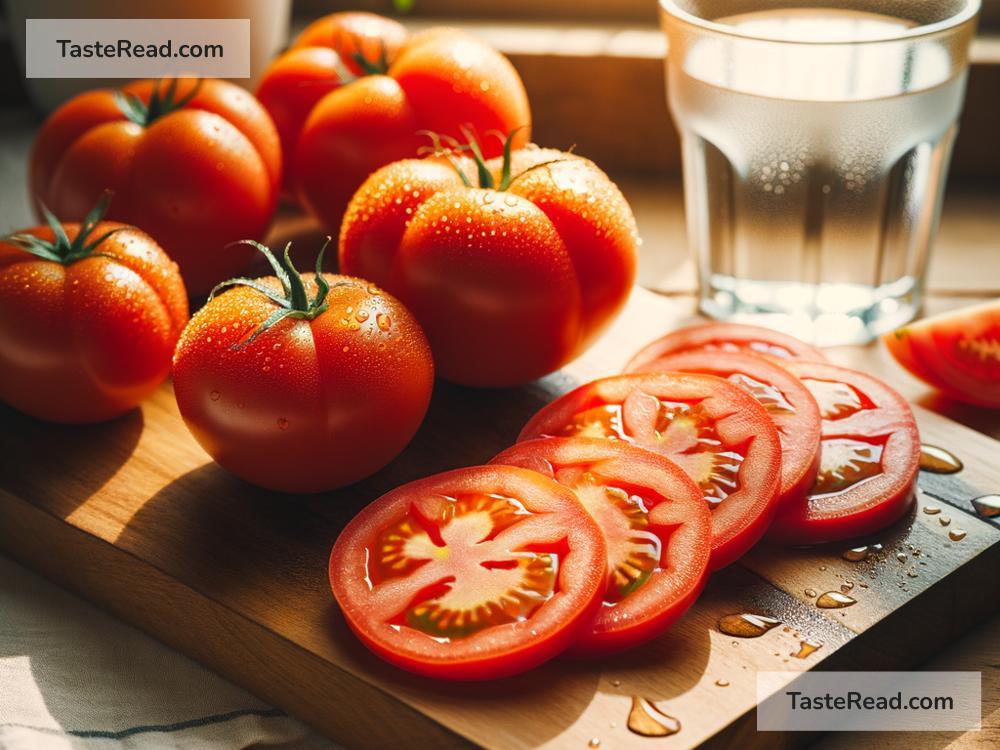The Truth About the Tomato’s Acidic Nature
Tomatoes are one of the most popular fruits (yes, they’re technically fruits!) in the world. From pizza sauce to fresh salads, this versatile ingredient can be found in countless dishes across cultures. But there’s one aspect of tomatoes that often sparks debate—how acidic they really are. You’ve probably heard people describe tomatoes as “highly acidic,” and while that’s partly true, the full story is much more interesting. Today, we’re diving into the truth about the tomato’s acidic nature and breaking it down in simple English.
Understanding Acidity
To understand why tomatoes are considered acidic, we need to talk about what acidity means. Acidity is determined by something called pH levels. The pH scale ranges from 0 to 14, with numbers below 7 considered acidic, 7 being neutral, and above 7 considered alkaline. The lower the number, the more acidic a substance is. For example, lemons, which are highly acidic, have a pH around 2, while water is neutral with a pH of 7.
So where do tomatoes fall on the pH scale? Depending on the variety, tomatoes are typically between 4.3 and 4.9 on the pH scale, making them mildly acidic. For comparison, coffee usually has a pH of around 5, and soda can be as acidic as 3. Tomatoes aren’t the “most acidic” food out there, but they do have enough acidity to influence their flavor and how they interact with other ingredients.
Why Are Tomatoes Acidic?
The acidity in tomatoes comes primarily from natural acids found in the fruit—mainly citric acid and malic acid. These acids are what give tomatoes their tangy and slightly sour taste. The balance of these acids can vary depending on the type of tomato, how ripe it is, and even the conditions where it was grown.
- Variety Matters: Some types of tomatoes, like Roma or plum tomatoes, tend to be less acidic and sweeter, while others like beefsteak tomatoes or cherry tomatoes have a sharper bite.
- Ripeness Plays a Role: A ripe, red tomato will generally taste sweeter and less acidic than an unripe green tomato. That’s because as tomatoes ripen, their sugar content increases, balancing out the natural acids.
- Growing Conditions: The soil, climate, and sunlight can also affect a tomato’s flavor profile, including its acidity. In sunnier conditions, tomatoes can develop more sugars, which can make them taste less tangy.
Addressing Misconceptions
Now that we know tomatoes are mildly acidic, let’s tackle some common misconceptions.
-
Tomatoes Are Dangerous for Your Health
Some people worry that tomato acidity might harm their stomach. While it’s true that acidic foods can irritate people with sensitivities, like acid reflux or GERD (gastroesophageal reflux disease), tomatoes don’t pose a serious risk for most people. If you have one of these conditions, it’s smart to eat tomatoes in moderation and pair them with other less-acidic ingredients. Cooking tomatoes or adding a pinch of sugar can also reduce their tanginess. -
All Tomato Products Are Highly Acidic
Tomatoes can taste different depending on how they’re prepared. Fresh, raw tomatoes are less acidic compared to their concentrated forms, like canned tomatoes or tomato paste. Processing tomatoes often amplifies their acidic flavors. If you’re using canned tomato products in cooking but want to reduce acidity, you can try adding a little baking soda to neutralize some of the acid. Lime juice and vinegar can also mask acidity with more complex flavors. -
Low-Acid Tomatoes Can’t Be Grown Naturally
It’s true that some tomatoes are advertised as “low-acid,” especially for people dealing with acid sensitivity. These types aren’t entirely acid-free; they simply have higher sugar levels that balance out the tangy flavors, making them appear less acidic. Heirloom varieties like Yellow Pear or Sweet 100 are lower-acid options for those seeking a milder taste.
Tomato Acidity in Cooking
In cooking, tomato acidity is often a good thing! It’s what gives dishes like marinara sauce their bright and bold flavor. Acidity helps balance richness, sweetness, and fat in recipes. For example:
- In pasta sauces, tomato acidity offsets the creaminess of cheese or butter.
- In soups, it provides a refreshing edge.
- In dishes like chili or stew, tomato tang brightens the overall flavor.
If you find acidity too overpowering, you can tweak recipes by adding a pinch of sugar, which doesn’t remove the acid but balances it with sweetness. Alternatively, you can incorporate alkaline ingredients like cream or milk.
Final Thoughts
Tomatoes do have an acidic nature, but they’re far from being “highly acidic” compared to other foods like citrus fruits or vinegar. Their mild acidity is an essential part of their flavor profile, making them the star of so many dishes we love. Whether you enjoy them raw in summer salads, blended into sauces, or roasted with some olive oil, tomatoes are one of nature’s most versatile foods.
Remember, if acidity ever feels like too much for your palate or your digestion, there are ways to reduce or balance it—like choosing sweeter tomato varieties or pairing them with complementary ingredients. Now you know the truth about tomatoes’ acidic nature—so the next time you bite into one, you can relish its perfect blend of tang and sweetness! 🌱


